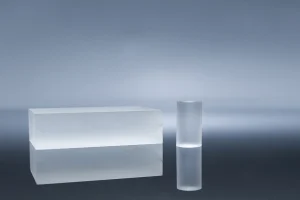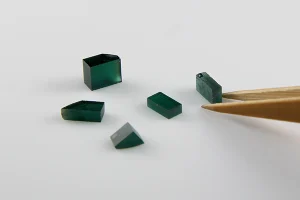In the world of photonics, high-power lasers have emerged as a transformative force, powering innovations across industries. However, with great power comes the challenge of heat management. Ensuring these lasers operate efficiently and safely requires advanced cooling technologies. In this comprehensive guide, we delve into the various cooling methods for high-power lasers, exploring their intricacies and determining their suitability for different applications.
The Imperative of Cooling in High-Power Lasers
High-power lasers generate significant amounts of heat during operation. If not managed effectively, this heat can degrade performance, reduce the lifespan of the laser, and even pose safety risks. Thus, implementing an efficient cooling system is not just beneficial—it’s essential.
Water Cooling: The Traditional Powerhouse
In the realm of laser technology, managing heat is paramount. One of the most tried-and-true methods to achieve this is through water cooling. But what makes it so effective, and why has it remained a preferred choice for so many years?
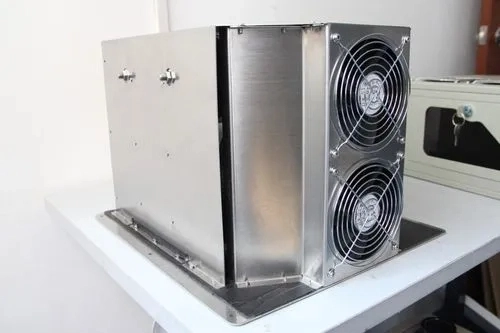
How Does It Work?
At its core, water cooling is a straightforward process. It involves circulating water around the laser components, effectively absorbing the heat generated during the laser’s operation. As the water absorbs this heat, it naturally warms up. This heated water is then directed away from the laser components and passed through radiators or chillers. These devices cool the water down, and once it reaches the desired temperature, it’s recirculated back to absorb more heat, ensuring the laser remains at an optimal operating temperature.
Advantages
•Efficiency: One of the primary reasons water is used for cooling is its high heat capacity. This means it can absorb a significant amount of heat before its temperature rises, making it an excellent medium for heat dissipation.
•Scalability: Whether you’re dealing with medium-powered lasers used in medical procedures or high-powered lasers in industrial applications, water cooling scales beautifully to meet the demands.
•Precision: With the right setup, water cooling allows for meticulous temperature control. This precision ensures that the laser’s performance remains consistent, even during prolonged operations.
Limitations
Complexity: While effective, water cooling isn’t a plug-and-play solution. It demands a system comprising pumps, chillers, and other components to ensure the water circulates effectively.
•Maintenance: To ensure longevity and optimal performance, the water used in the cooling system must be of high quality. Impurities or minerals in the water can lead to issues like corrosion or buildup, which can compromise the system’s efficiency. Regular monitoring and maintenance become crucial to prevent such issues and ensure the laser’s longevity.
Air Cooling: The Versatile Contender
In the vast arena of laser cooling solutions, air cooling stands out as a flexible and user-friendly option. While it might not offer the intense cooling capabilities of its water-based counterpart, it brings to the table a set of benefits that make it a worthy consideration for various applications.
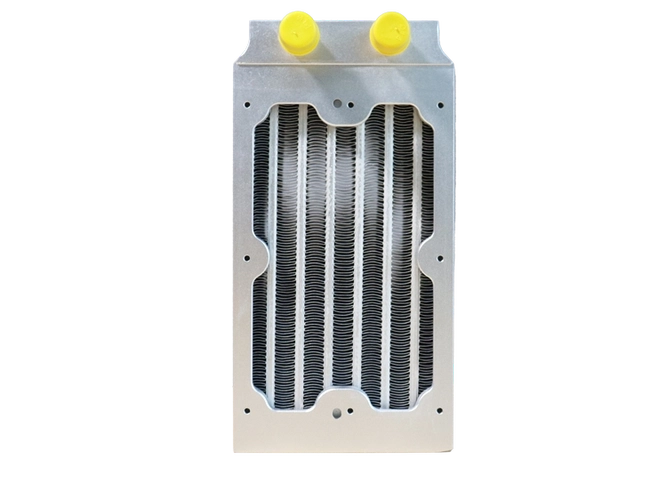
How Does It Work?
Air cooling operates on a simple principle. Fans or blowers are strategically positioned to circulate air around the laser components, effectively drawing away the heat generated during operation. As this hot air is moved away, it’s expelled from the system. Concurrently, cooler ambient air is drawn into the system, ensuring the laser components remain at a manageable temperature.
Advantages
•Simplicity: One of the standout features of air cooling is its straightforwardness. Without the need for pumps, chillers, or water quality checks, it’s generally easier to set up and maintain.
•Portability: Given its less complex setup, air cooling is a perfect match for mobile laser systems or those with space constraints.
•Cost-effective: When budget constraints come into play, air cooling shines. It’s typically less expensive to install and run compared to water cooling systems.
Limitations
•Efficiency: While air cooling is effective for many applications, it doesn’t quite match the cooling prowess of water, especially when dealing with high-power lasers that generate significant heat.
•Noise: A necessary evil of air cooling is the noise produced by fans and blowers. In environments where silence is golden, this could pose a challenge.
Suitability of Different Cooling Technologies
In the realm of laser operations, cooling is paramount. The choice between different cooling technologies can significantly impact the efficiency, longevity, and overall performance of a laser system. But how does one decide between the robustness of water cooling and the simplicity of air cooling? Let’s delve deeper into the factors that can guide this decision.
Factors to Consider
• Laser Power: The power of the laser in use is a primary determinant. High-power lasers, due to their intense heat generation, often necessitate the superior cooling capabilities of water. On the other hand, low to medium power lasers can often get by with air cooling, especially if they aren’t running continuously.
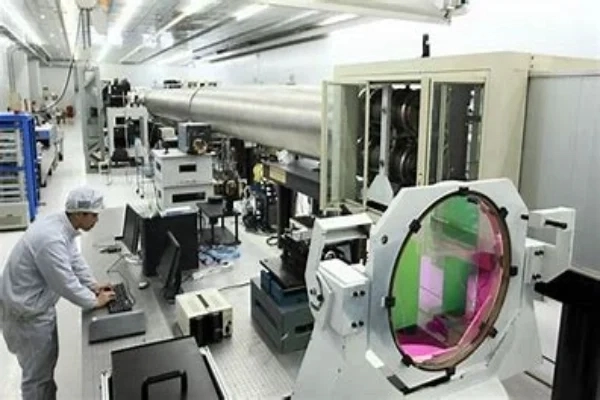
• Environment: The surrounding environment plays a pivotal role. In areas prone to dust or contaminants, water cooling systems can offer a sealed environment, reducing the risk of external contamination. Conversely, in humid environments, air cooling might be more suitable to prevent potential condensation issues.
• Budget: Financial considerations can’t be overlooked. While water cooling systems offer robust performance, they come with a heftier price tag, both in terms of initial setup and maintenance. Air cooling systems, being more straightforward, are generally lighter on the pocket, making them a go-to for projects with budget constraints.
• Space: The physical space available for the laser setup is also a determining factor. Compact setups or those requiring mobility might lean towards air cooling due to its less complex infrastructure. In contrast, setups with ample space might opt for water cooling, especially if they prioritize cooling efficiency.
Making the Right Choice
Choosing between water and air cooling isn’t a one-size-fits-all scenario. Both technologies have carved their niche, offering unique advantages. The key lies in understanding the specific demands of the laser system in question and its operational context. Whether it’s a high-power laser used in precision manufacturing or a portable engraving system, the cooling choice should align with its requirements. When in doubt, seeking expert advice or conducting thorough research can pave the way for an informed decision, ensuring the laser system operates optimally and stands the test of time.
The Future of Laser Cooling Technologies
In the rapidly advancing world of photonics, laser cooling technologies are undergoing a transformative phase. As lasers become more powerful and their applications more diverse, the demand for innovative and efficient cooling solutions has never been higher. Traditional methods, while effective, are continuously being refined and supplemented with cutting-edge techniques to meet the evolving challenges.
One such innovation is phase-change cooling. This method leverages the latent heat of materials, allowing for efficient heat absorption during phase transitions, such as from liquid to gas. This not only ensures rapid cooling but also minimizes the risk of temperature spikes, which can be detrimental to laser performance.
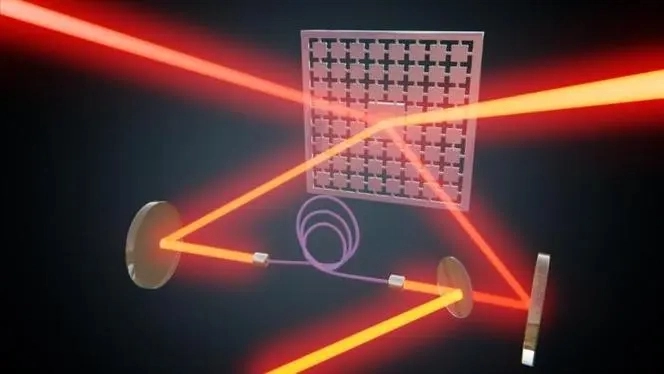
Cryogenic cooling is another frontier being explored. By cooling lasers to extremely low temperatures, often close to absolute zero, this method promises unparalleled thermal stability. Such a cooling environment can significantly enhance the performance of certain lasers, especially those used in quantum computing and high-precision measurements.
Lastly, liquid metal cooling is making waves in the industry. By using metals in a liquid state as coolants, this method offers superior thermal conductivity, ensuring rapid heat dissipation. Moreover, liquid metals can conform to intricate laser geometries, ensuring uniform cooling.
Conclusion
The journey of laser technology is one of continuous discovery and innovation. As we harness the power of lasers for diverse applications, from medical surgeries to data transmission, the role of efficient cooling becomes undeniably crucial. Traditional methods like water and air cooling have served us well, but the future beckons with promises of even more advanced solutions. Phase-change, cryogenic, and liquid metal cooling are just the tip of the iceberg. As we venture further into the realm of high-power lasers, our cooling technologies will undoubtedly evolve in tandem, ensuring that our lasers not only function optimally but also safely. The future of laser cooling is bright, and we stand on the cusp of a new era of technological marvels.
FAQs
- Why is cooling so important for high-power lasers?
- Efficient cooling ensures optimal performance, prolongs the lifespan of the laser, and ensures safety.
- Can I use air cooling for very high-power lasers?
- While possible, water cooling is generally recommended for very high-power lasers due to its superior heat dissipation capabilities.
- Are there any emerging cooling technologies for lasers?
- Yes, innovations like phase-change cooling and cryogenic cooling are being explored.
- How often do I need to maintain a water cooling system?
- Regular maintenance, including checking water quality and ensuring the system is free from blockages, is essential.
- Is noise a significant concern with air cooling systems?
- It can be, especially in quiet environments. It’s essential to consider this when choosing a cooling method.



